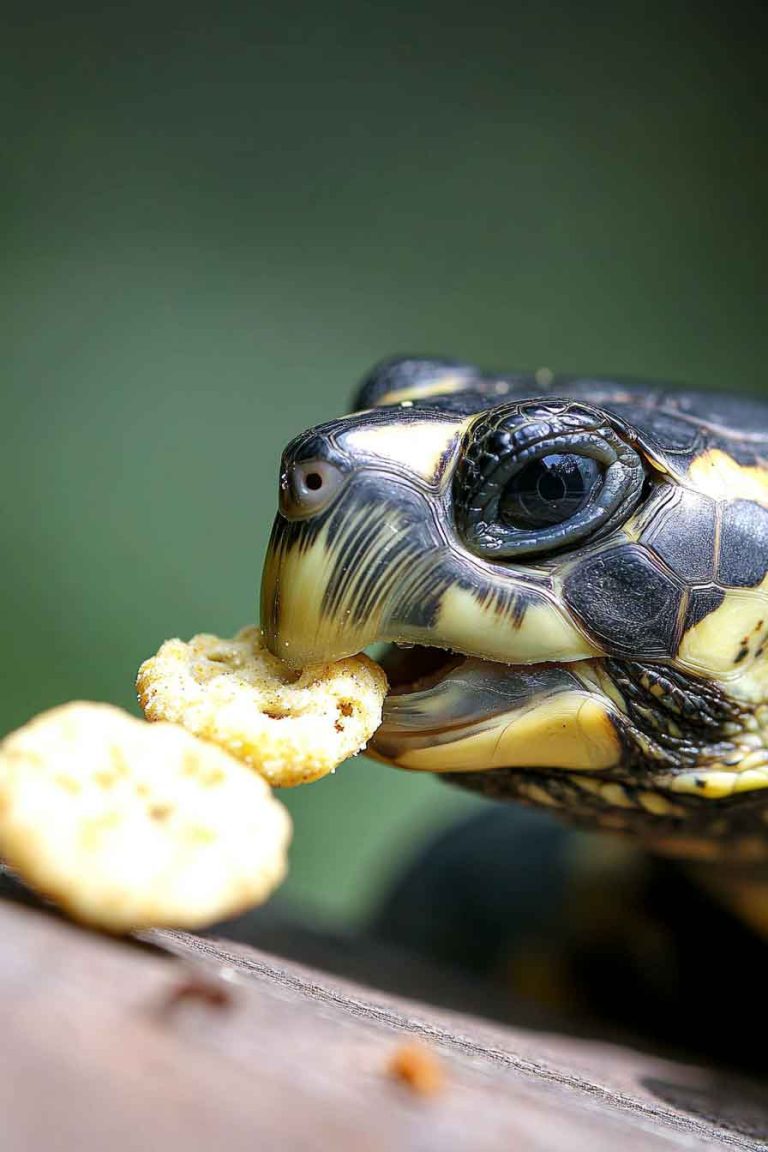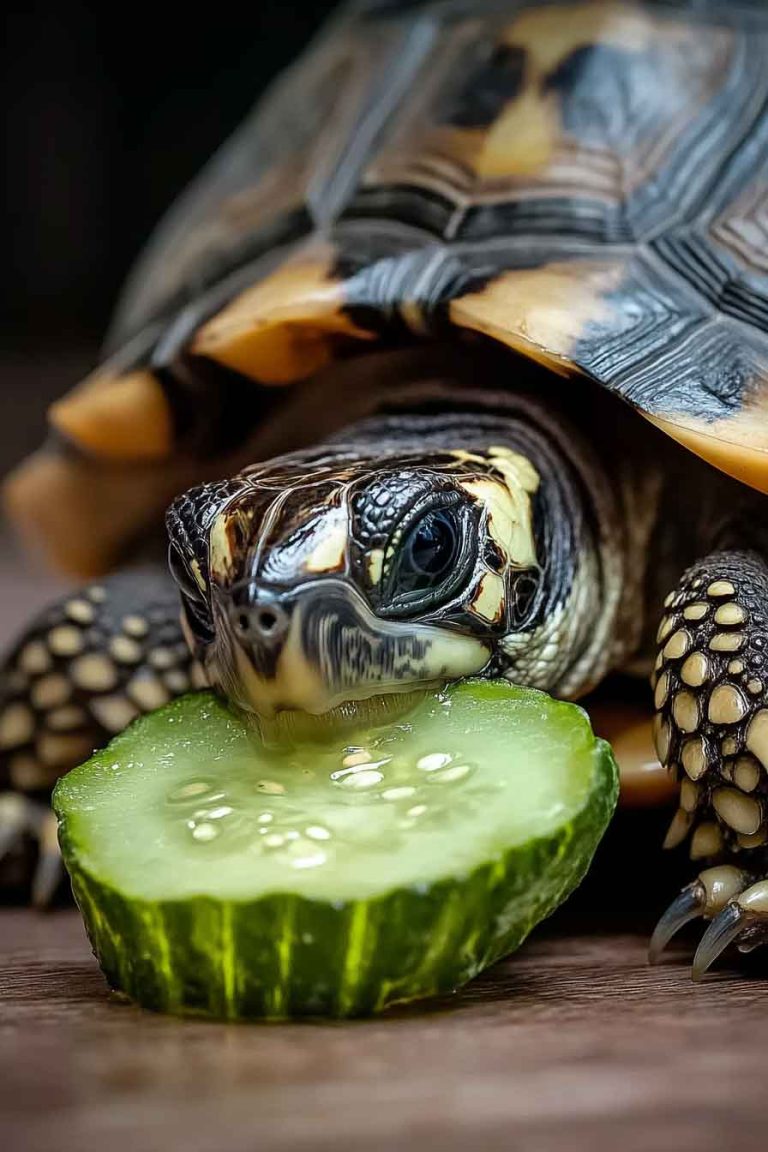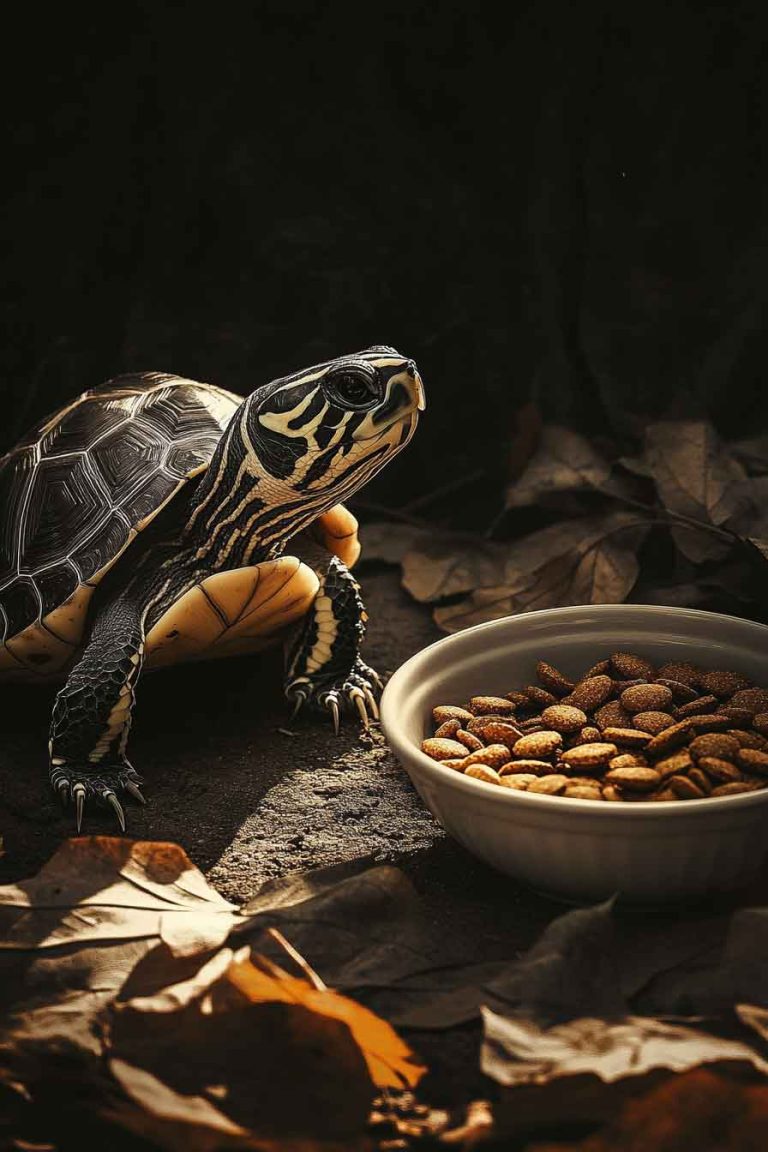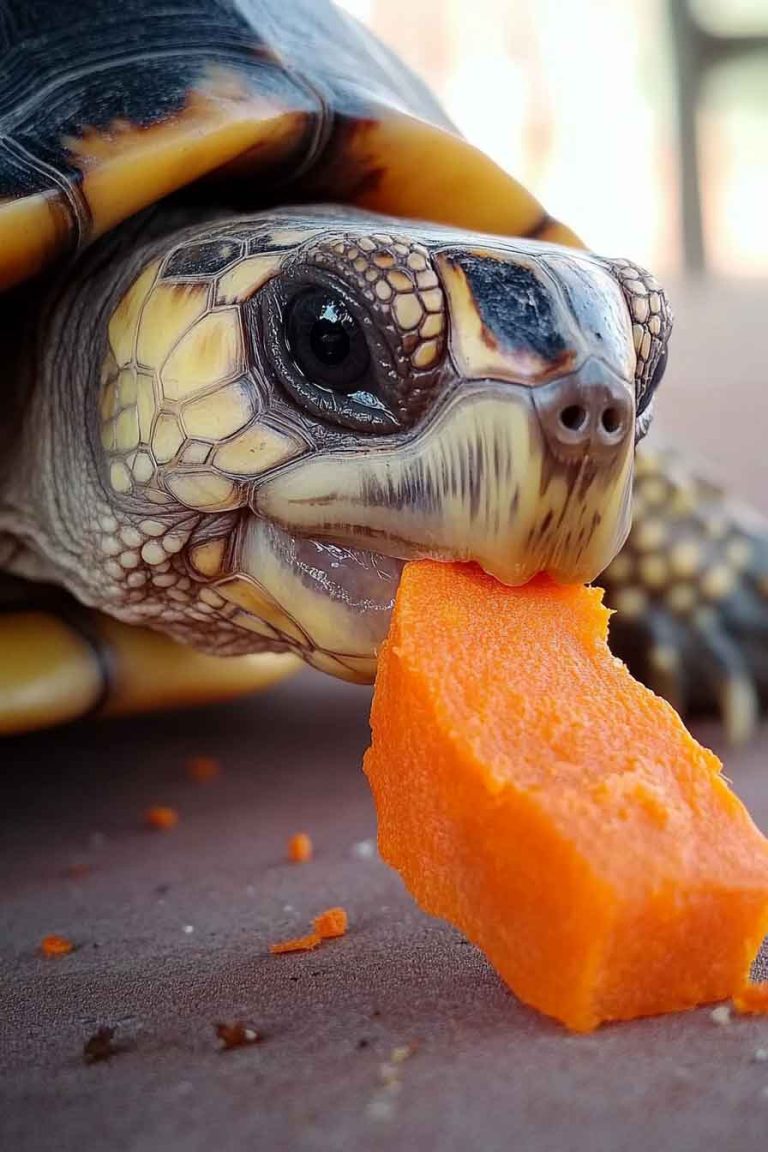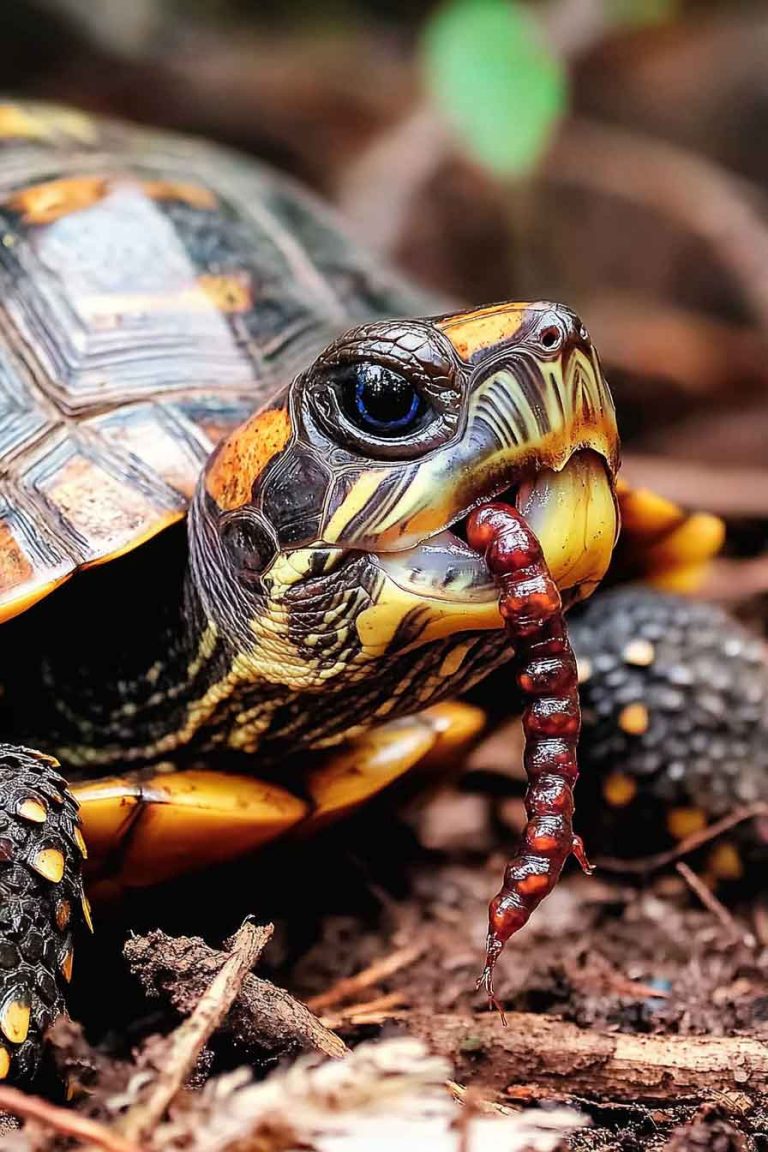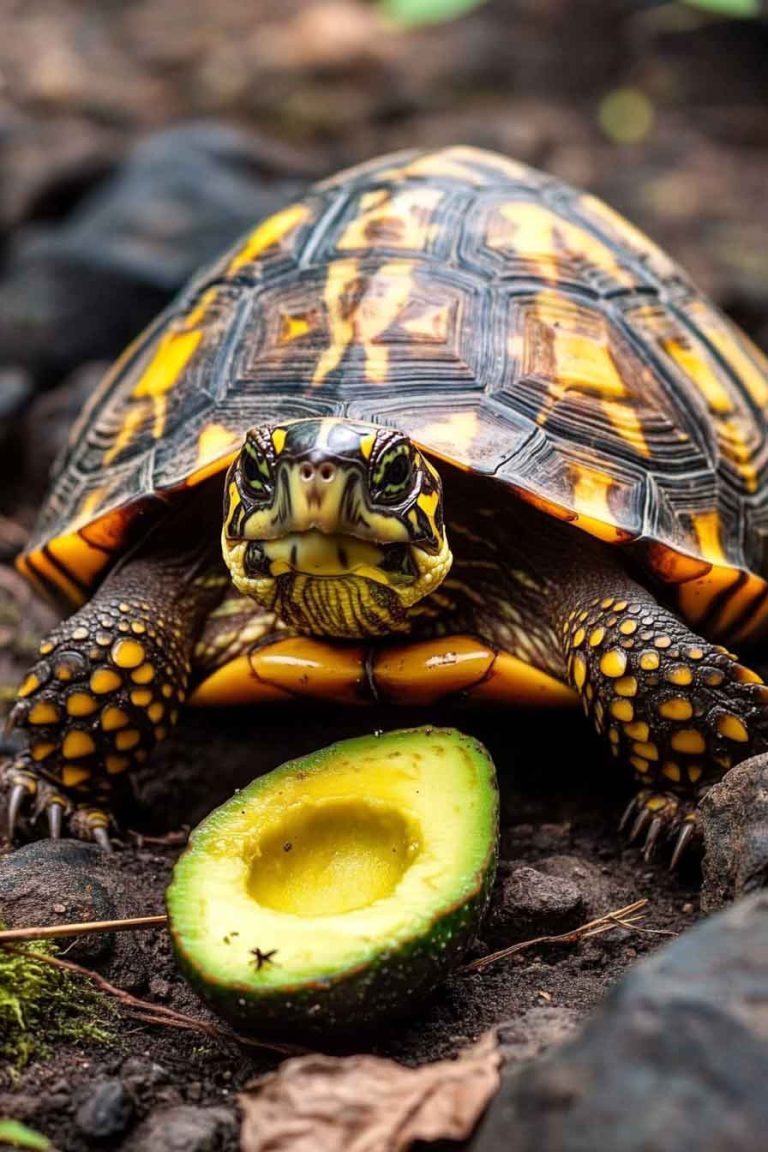Can Turtles Eat Asparagus? Benefits, Risks & Feeding Guide
If you’ve got a pet turtle like I do, then you’ve probably wondered what kinds of vegetables are safe to share. After all, it’s natural to want to feed them something fresh and green. And asparagus? Well, it’s healthy for us—but does that mean it’s good for turtles too? So, can turtles eat asparagus? The…
If you’ve got a pet turtle like I do, then you’ve probably wondered what kinds of vegetables are safe to share. After all, it’s natural to want to feed them something fresh and green. And asparagus? Well, it’s healthy for us—but does that mean it’s good for turtles too?
So, can turtles eat asparagus? The answer is yes—but with caution. Turtles can eat asparagus in small amounts, but it’s not the best vegetable to offer regularly. Asparagus contains certain acids and compounds that don’t align well with your turtle’s sensitive digestive system. While it’s not toxic like onions or garlic, it also isn’t the most beneficial food you can give them.
Let’s dig deeper into why asparagus isn’t completely off-limits—but also not a top-tier veggie choice for your turtle.
Can You Feed Asparagus to Your Pet Turtle?
Yes, you can feed asparagus to your turtle—but only occasionally and in small quantities. While it’s not dangerous or poisonous, it can still create problems if it becomes a frequent part of your turtle’s meals.
Here’s the thing—just because asparagus is a green vegetable doesn’t mean it’s always a good fit for reptiles. Some veggies, like collard greens and dandelion greens, are excellent. But asparagus is more of a neutral option. It’s not harmful in small portions, but it’s also not super nutritious for turtles either.
So, if you’re offering asparagus once in a while as a treat or to mix things up, that’s fine. Just don’t make it a habit.
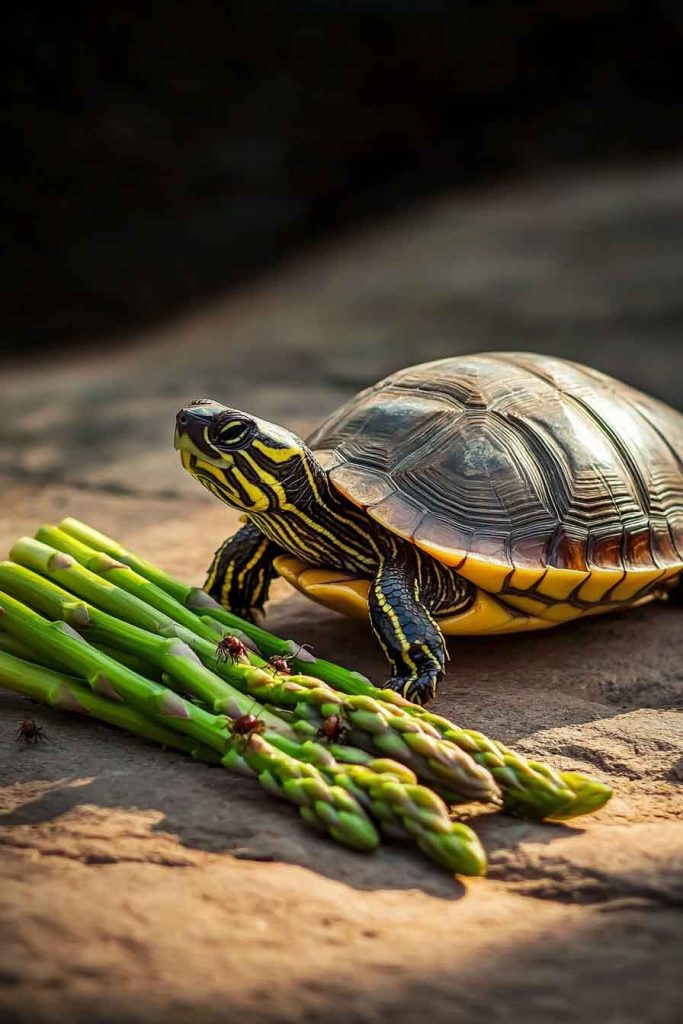
Nutritional Breakdown of Asparagus (Per 100g)
Let’s take a look at what’s actually in asparagus so we can understand what your turtle is getting.
- Carbohydrates: 3.88 g
- Sugar: 1.88 g
- Protein: 2.2 g
- Calcium: 24 mg
- Phosphorus: 52 mg
- Vitamin C: 5.6 mg
- Vitamin K: 41.6 mcg
- Folate: 52 mcg
- Potassium: 202 mg
- Oxalic Acid: Present
- Fiber: 2.1 g
Now, at first glance, this might seem like a decent list—but here’s where it gets tricky. Asparagus has more phosphorus than calcium, and turtles really need the opposite: more calcium than phosphorus to maintain strong bones and shells. When that balance is off, especially over time, it can lead to calcium deficiency and eventually Metabolic Bone Disease.
Also, asparagus contains oxalic acid, which binds with calcium and makes it harder for your turtle to absorb. So even if you’re giving calcium-rich foods, too much asparagus can cancel that out.
This is why I say: asparagus is okay once in a while, but don’t rely on it.
Do Turtles Like Asparagus?
From my experience and what I’ve read in forums, turtles usually aren’t big fans of asparagus. The smell and texture don’t seem to appeal to most species. Some might nibble on it, especially if you chop it into smaller pieces or steam it lightly—but don’t be surprised if your turtle turns its nose up at it.
That’s actually a good thing. Their instincts often tell them what’s not ideal for them. If your turtle avoids asparagus, don’t push it. Stick with better greens like mustard greens, collards, or even romaine lettuce (in moderation).
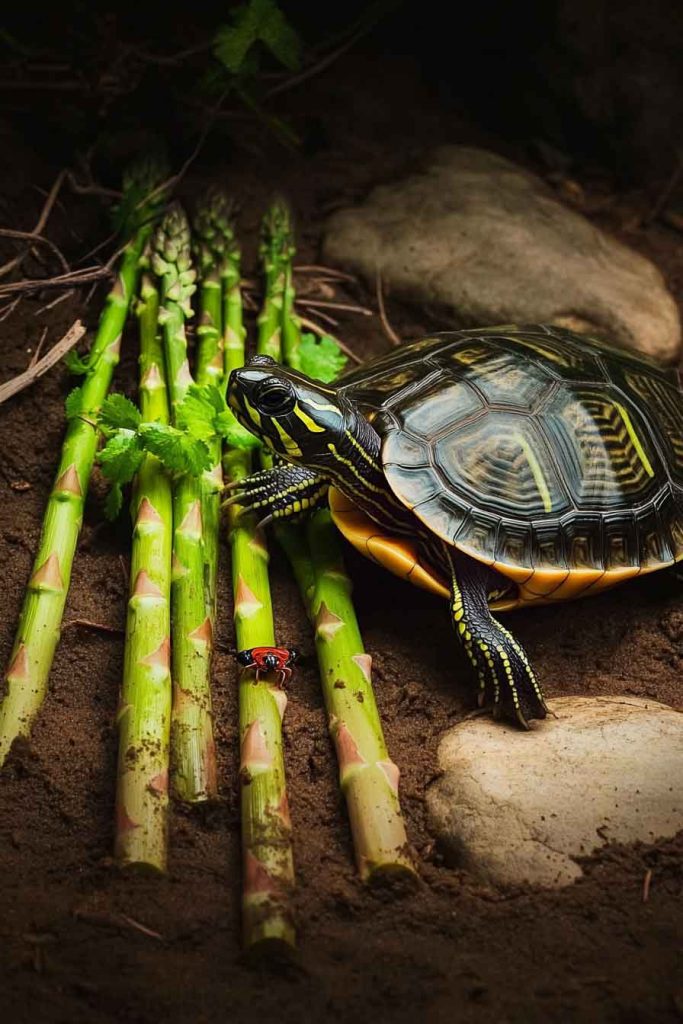
Health Effects of Asparagus on Turtles
Feeding asparagus once in a while likely won’t hurt your turtle, but there are a few things to keep in mind. Let’s go over the potential health issues and what can happen if you feed it too often.
1. Digestive Discomfort
Asparagus contains insoluble fiber and small traces of oxalic acid—both of which can irritate your turtle’s stomach if given too frequently. Turtles have sensitive digestive systems, and introducing foods that are tough to break down can cause bloating, gas, or even diarrhea.
Your turtle might not show immediate symptoms, but over time, these issues can add up and lead to serious digestive imbalances.
2. Incorrect Calcium to Phosphorus Ratio
One of the most important things I’ve learned as a turtle parent is that they need a 2:1 calcium to phosphorus ratio in their diet. That means twice as much calcium as phosphorus for proper shell and bone development.
Asparagus has more phosphorus than calcium, which throws off that ratio. If this becomes a pattern in their diet, the extra phosphorus will actually block calcium absorption, and over time, that can lead to shell deformities, weak bones, or even Metabolic Bone Disease.
3. Oxalates Binding Calcium
We touched on this earlier, but it’s worth repeating—oxalates in asparagus bind to calcium, preventing your turtle’s body from using it. Even if you feed calcium-rich food alongside asparagus, those oxalates can cancel out the benefits.
This is one of the reasons why I avoid feeding high-oxalate vegetables (like spinach or beet greens) regularly to my turtles—and I’d recommend the same for you.
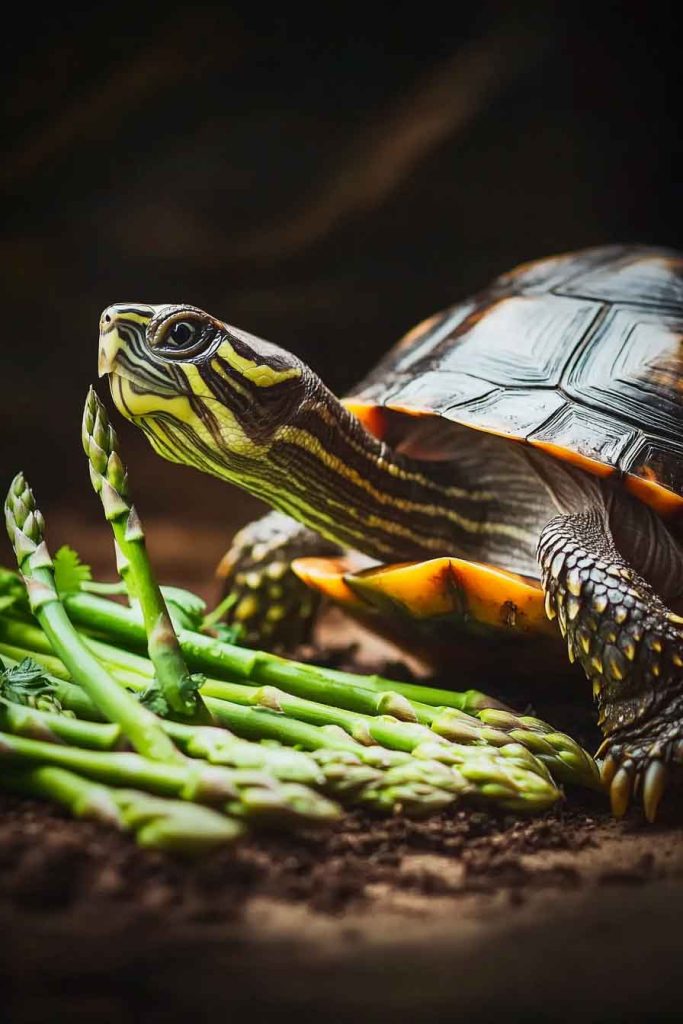
Can Baby Turtles Eat Asparagus?
No, I wouldn’t recommend giving asparagus to baby turtles.
Baby turtles have even more fragile systems than adults, and they require a very specific, nutrient-rich diet to grow strong shells and bones. Since asparagus has poor calcium levels and contains compounds that interfere with absorption, it’s not a good match for hatchlings or young turtles.
If you’re raising baby turtles, it’s best to stick with foods like dandelion greens, hibiscus leaves, cuttlefish bone, and commercial turtle pellets that are specifically designed to support healthy growth.
How Much Asparagus Is Safe for Turtles?
If you really want to feed asparagus to your turtle, keep it minimal.
Here’s what I personally follow:
- Once every 2–3 weeks
- Small chopped pieces
- Steamed lightly (optional) to make it easier to digest
- Always paired with calcium-rich vegetables like kale or collard greens
Never feed asparagus raw in large amounts, and don’t include it in your turtle’s main salad mix. Think of it more like a side dish—just something different for them to nibble on every once in a while.
Frequently Asked Questions (FAQs)
Can Red-Eared Slider Turtles Eat Asparagus?
Yes, red-eared sliders can eat asparagus, but only in moderation. Their digestive systems are sensitive to high oxalate and phosphorus-rich foods. Feeding asparagus occasionally is fine, but it shouldn’t be part of their regular diet.
Can Box Turtles Eat Asparagus?
Box turtles are omnivores, so they eat a mix of plants and protein. While they might be able to handle asparagus a bit better, I still recommend offering it sparingly. Stick to safer greens like turnip tops and escarole.
Can Painted Turtles Eat Asparagus?
Painted turtles can eat asparagus, but just like other turtles, it should be an occasional treat. Painted turtles do best with aquatic plants, leafy greens, and protein from insects or fish. Asparagus doesn’t offer them much in terms of nutrition.
Is Cooked Asparagus Better for Turtles?
Slightly steaming asparagus can make it easier to chew and digest. Just avoid seasoning, butter, oil, or salt—plain, soft asparagus is the only kind that might be acceptable. Still, moderation is key.
What Vegetables Are Better Than Asparagus?
I always recommend leafy greens like:
- Dandelion greens
- Collard greens
- Mustard greens
- Endive
- Turnip greens
These have the right calcium-to-phosphorus balance and are easier for your turtle’s system to handle.
Conclusion
So, can turtles eat asparagus? Yes, but only occasionally. It’s not toxic, and a little bit now and then won’t hurt your turtle. But it’s also not the best vegetable to include in their diet regularly. The high phosphorus content, low calcium levels, and presence of oxalates make it more of a “neutral” food than a beneficial one.
If you’re like me and want to give your turtle variety, there’s no harm in tossing in a few pieces of steamed asparagus every few weeks. Just make sure their core diet is packed with nutrient-dense greens, proper calcium sources, and safe vegetables.
Being mindful of what you feed your turtle means a longer, healthier life for your shelled friend—and that’s what we all want, right?
Thanks for reading, and I hope this helped you feel more confident about what goes in your turtle’s bowl.


